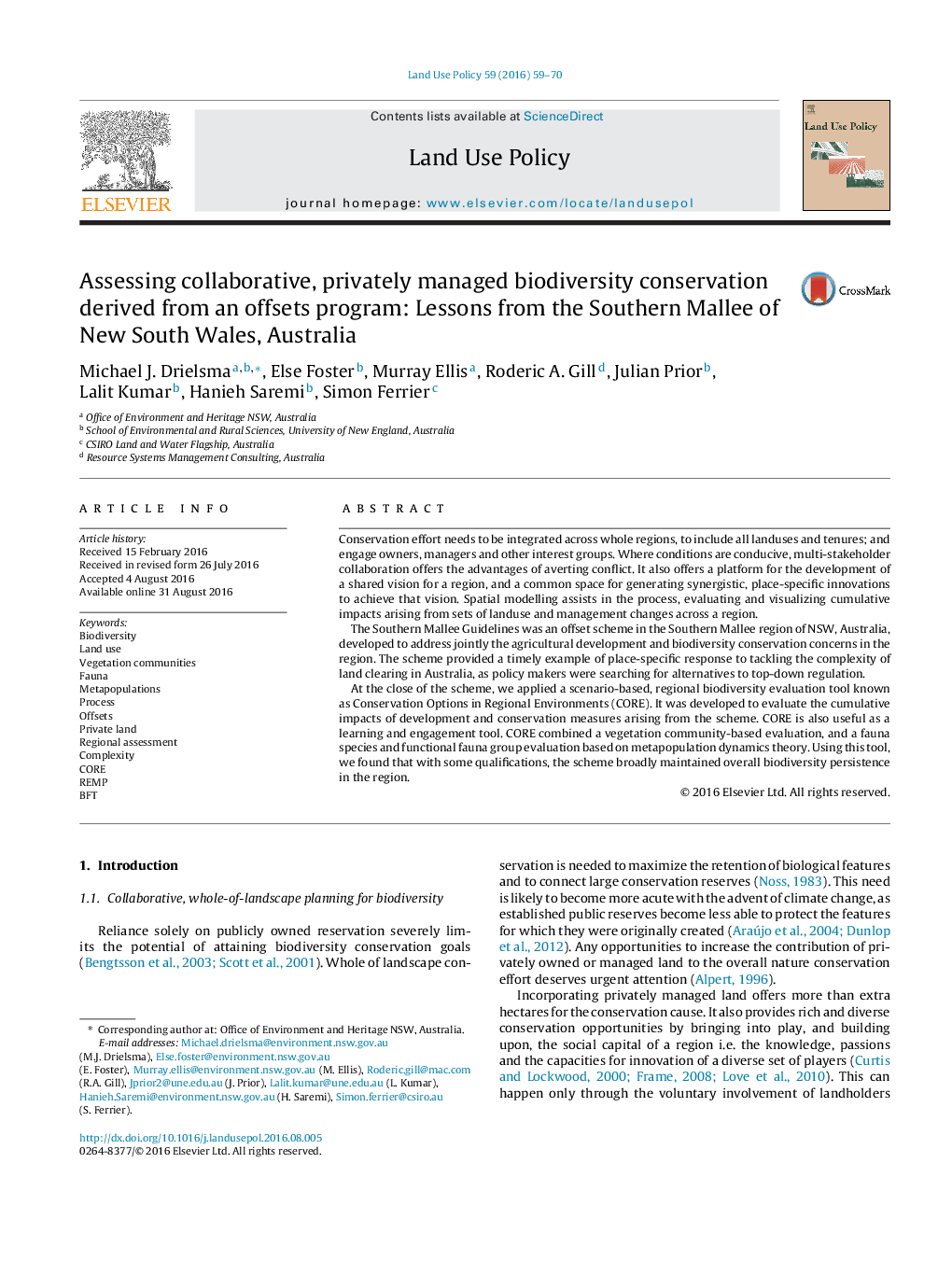| Article ID | Journal | Published Year | Pages | File Type |
|---|---|---|---|---|
| 6461479 | Land Use Policy | 2016 | 12 Pages |
â¢We evaluated the Southern Mallee offset scheme's impact on biodiversity.â¢We considered impacts on vegetation communities and 19 fauna entities.â¢CORE integrates metapopulation processes with extent of habitat and its condition.â¢With qualifications, the scheme achieved a 'maintain-or-improve' outcome.â¢Needing limited data, the approach can be applied to similar offset schemes.
Conservation effort needs to be integrated across whole regions, to include all landuses and tenures; and engage owners, managers and other interest groups. Where conditions are conducive, multi-stakeholder collaboration offers the advantages of averting conflict. It also offers a platform for the development of a shared vision for a region, and a common space for generating synergistic, place-specific innovations to achieve that vision. Spatial modelling assists in the process, evaluating and visualizing cumulative impacts arising from sets of landuse and management changes across a region.The Southern Mallee Guidelines was an offset scheme in the Southern Mallee region of NSW, Australia, developed to address jointly the agricultural development and biodiversity conservation concerns in the region. The scheme provided a timely example of place-specific response to tackling the complexity of land clearing in Australia, as policy makers were searching for alternatives to top-down regulation.At the close of the scheme, we applied a scenario-based, regional biodiversity evaluation tool known as Conservation Options in Regional Environments (CORE). It was developed to evaluate the cumulative impacts of development and conservation measures arising from the scheme. CORE is also useful as a learning and engagement tool. CORE combined a vegetation community-based evaluation, and a fauna species and functional fauna group evaluation based on metapopulation dynamics theory. Using this tool, we found that with some qualifications, the scheme broadly maintained overall biodiversity persistence in the region.
